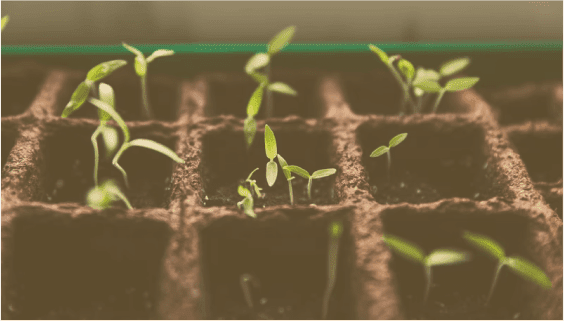By Nicole Telkes, Practicing Herbalist
about.me/herbcrafter
Director of the Wildflower School of Botanical
Medicine Austin Texas
Buying herbs can be tricky: Herbs are regulated
through the Dietary Supplement Health and Education Act (DSHEA). Just because the industry is regulated,
doesn’t mean that everything on the shelf is of the highest quality or even
what it says it is. In general it’s good
to ask a lot of questions when it comes to purchasing supplements. Many formulas on the market are “kitchen
sink” style, where everything natural that could possibly work is thrown in
hopes that something may work. Buying
herbs from trained herbalists is very different from buying herbs from the herb
industry. The amount of energy and love
that goes into making fresh, hand-picked extracts is immeasurable and cannot
even be compared with large herb companies (oftentimes now subsidiaries of
pharmaceutical companies). Whenever
possible, support small herb companies, local herbalists and local herb
growers. The herbs you obtain from
smaller suppliers will most likely be fresher, more potent, more sustainably
harvested and include weedy, local herbs that are not often found in the market
or large health food stores. Just
because something is “natural” does not make it safer or better. Herbalists are able to distinguish when and
what herbs may work better for an individual and amend recipes to an
individual’s unique situation. Take care
to purchase Organically Grown herbs, or those grown in pesticide-free
gardens. Make sure that any herbs that
you buy that are “wildcrafted”(taken from the wild) are picked under strict
conservation guidelines. Over harvesting
of many popular market herbs have led to them being placed in “At Risk” or
“Threatened” status by United Plant Savers, a group dedicated to the
conservation of medicinal plants . It
is very important to know where your plants came from and use as many weedy
alternatives to exotic plants that are brought into the country. Many times herbs coming from overseas are
irradiated upon entering the country. A
great website that gives information on additives and preservatives, and levels
of toxicity for is the Environmental Working Group at www.ewg.org
through the Dietary Supplement Health and Education Act (DSHEA). Just because the industry is regulated,
doesn’t mean that everything on the shelf is of the highest quality or even
what it says it is. In general it’s good
to ask a lot of questions when it comes to purchasing supplements. Many formulas on the market are “kitchen
sink” style, where everything natural that could possibly work is thrown in
hopes that something may work. Buying
herbs from trained herbalists is very different from buying herbs from the herb
industry. The amount of energy and love
that goes into making fresh, hand-picked extracts is immeasurable and cannot
even be compared with large herb companies (oftentimes now subsidiaries of
pharmaceutical companies). Whenever
possible, support small herb companies, local herbalists and local herb
growers. The herbs you obtain from
smaller suppliers will most likely be fresher, more potent, more sustainably
harvested and include weedy, local herbs that are not often found in the market
or large health food stores. Just
because something is “natural” does not make it safer or better. Herbalists are able to distinguish when and
what herbs may work better for an individual and amend recipes to an
individual’s unique situation. Take care
to purchase Organically Grown herbs, or those grown in pesticide-free
gardens. Make sure that any herbs that
you buy that are “wildcrafted”(taken from the wild) are picked under strict
conservation guidelines. Over harvesting
of many popular market herbs have led to them being placed in “At Risk” or
“Threatened” status by United Plant Savers, a group dedicated to the
conservation of medicinal plants . It
is very important to know where your plants came from and use as many weedy
alternatives to exotic plants that are brought into the country. Many times herbs coming from overseas are
irradiated upon entering the country. A
great website that gives information on additives and preservatives, and levels
of toxicity for is the Environmental Working Group at www.ewg.org
Dried
Plants: Look for vibrancy in the plant matter, good
color, and strong smells. Old herbs look
and smell worn out. Sometimes if they
are dried at the wrong temp(too high) they will be a little brown.
Plants: Look for vibrancy in the plant matter, good
color, and strong smells. Old herbs look
and smell worn out. Sometimes if they
are dried at the wrong temp(too high) they will be a little brown.
Tinctures:
Should smell more like the herb then
the menstruum it is preserved in. Dark
colors and deep and pungent in smell.
The color will vary between green, brown and black. Different plants need different percentages
of alcohol to extract. Make sure the
plant was extracted properly based on its constituents.
Should smell more like the herb then
the menstruum it is preserved in. Dark
colors and deep and pungent in smell.
The color will vary between green, brown and black. Different plants need different percentages
of alcohol to extract. Make sure the
plant was extracted properly based on its constituents.
Oils
and Salves: Should also vary in color
and smell. Salves should vary from green
to brown in coloration. Sediment ensures
there were actual infused plants in the blend.
and Salves: Should also vary in color
and smell. Salves should vary from green
to brown in coloration. Sediment ensures
there were actual infused plants in the blend.





